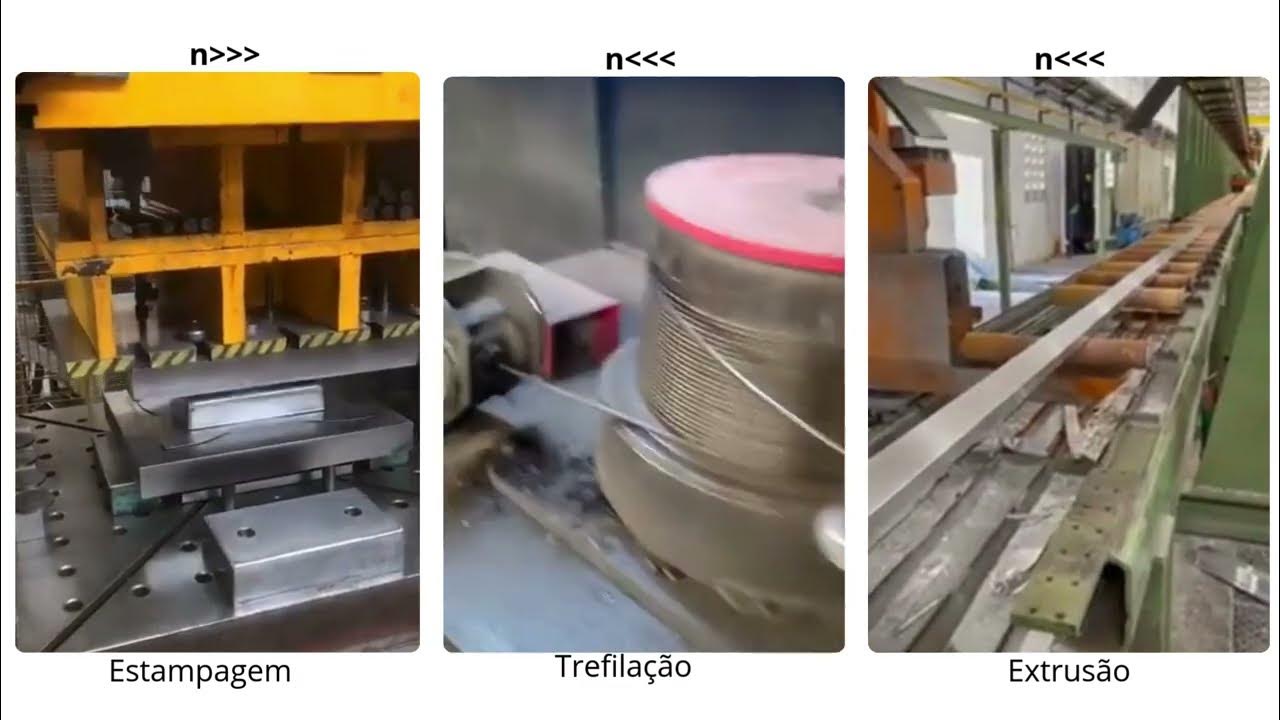Aluminium and the Age of Flight - Metal: How It Works - BBC Four
Summary
TLDRThis script explores the discovery of a breakthrough in metallurgy, focusing on the development of a stronger aluminum alloy. Initially, aluminum was too weak for flight, but German metallurgist Alfred Vill mixed it with other metals like copper and magnesium. After numerous failed attempts, a serendipitous event during a boating trip led to the discovery of age hardening, a process where the alloy became stronger over time as tiny crystals formed within the aluminum. This transformative discovery marked a pivotal moment in materials science, creating an alloy that was both light and strong enough for aerospace use.
Takeaways
- 😀 Metals, although similar, have distinct properties; aluminum is three times lighter than steel but not as strong.
- 😀 The early 20th century saw aluminum as a key material for the age of flight, despite its strength limitations.
- 😀 Scientists began seeking ways to strengthen aluminum, leading to the development of aluminum alloys.
- 😀 Alfred Vill, a German metallurgist, studied how other metals like copper and steel were strengthened through alloying.
- 😀 Vill experimented with mixing aluminum with copper, manganese, and magnesium, creating a new alloy he named 'sure element'.
- 😀 Initially, quenching the alloy did not provide the desired strength, as the metal remained weak despite repeated attempts.
- 😀 After a period of frustration, Vill took a break and went boating, unknowingly allowing the alloy to undergo a change.
- 😀 Upon returning, Vill found that the alloy had unexpectedly grown stronger over time without any direct intervention.
- 😀 This process, known as age hardening, occurs when tiny crystals form inside the aluminum crystals, making it stronger.
- 😀 As the new crystals grow, they interfere with the aluminum's ability to shuffle atoms, increasing its hardness and strength.
- 😀 Vill’s discovery of age hardening revolutionized the understanding of how aluminum alloys could be strengthened over time.
Q & A
What is the main difference between steel and aluminium?
-The primary difference is that aluminium is three times lighter than steel. However, aluminium is not as strong as steel, which presented a challenge for its use in certain applications, like flight.
Why was aluminium considered the perfect metal for flight?
-Aluminium was considered ideal for flight because of its lightness, which made it perfect for aviation, offering the potential for more efficient and manageable aircraft.
What was the challenge with using aluminium for flight?
-The main challenge was that aluminium was not strong enough on its own to withstand the stresses and demands of flight.
What approach did Alfred Vill take to strengthen aluminium?
-Alfred Vill experimented by mixing aluminium with other metals to create an alloy. His final combination included aluminium, copper, manganese, and magnesium.
What method did Vill use to try and strengthen the alloy he created?
-Vill used a process called quenching, where he heated the alloy in a furnace and then rapidly cooled it to attempt to harden the material.
What was the result when Vill first quenching the alloy?
-Initially, the quenching process did not work as expected. The alloy did not become as strong as steel, and Vill encountered repeated failures.
What led to the breakthrough in strengthening the alloy?
-After taking a break and going boating, Vill returned to find that the alloy had unexpectedly become much stronger. The key factor was time, as the alloy had undergone a transformation on its own.
What is age hardening?
-Age hardening is a process in which an alloy becomes stronger over time. In Vill's case, as the alloy sat undisturbed, tiny crystals formed inside the aluminium, reinforcing the material and making it stronger.
How do the tiny crystals formed during age hardening strengthen the alloy?
-The crystals interfere with the lattice structure of the aluminium, preventing the atoms from shifting too easily. This interference makes the alloy harder and stronger.
What did Vill's discovery of age hardening mean for materials science?
-Vill's discovery of age hardening was revolutionary because it explained how some alloys could become stronger without additional processing. It opened up new possibilities for improving the strength of metals over time.
Outlines

This section is available to paid users only. Please upgrade to access this part.
Upgrade NowMindmap

This section is available to paid users only. Please upgrade to access this part.
Upgrade NowKeywords

This section is available to paid users only. Please upgrade to access this part.
Upgrade NowHighlights

This section is available to paid users only. Please upgrade to access this part.
Upgrade NowTranscripts

This section is available to paid users only. Please upgrade to access this part.
Upgrade NowBrowse More Related Video

Aluminium - The Material That Changed The World

Pitch sobre Curva de Escoamento

Ayna Nöronlar | Bilim Dünyasının En Önemli Keşfi

iJuander: Imbensyong 'Power Stick,' proudly Pinoy-made!

The Evolution of the Bronze Age: The Next Chapter of Human History | Documentary

Evolution Of Metallurgy Through The Ages And Its Impact On Modern Society.
5.0 / 5 (0 votes)